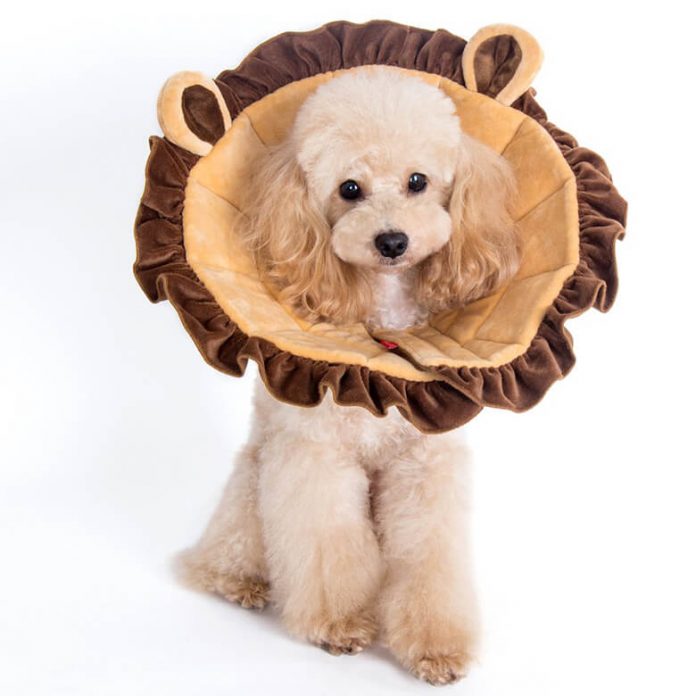Neutering and spaying dogs are one of the most preferred ways the new owners secure their dog’s future.
There has been a lot of ongoing research about neutering and spaying dogs. This has assisted dog breeders, owners, and surgeons to implement spaying and neutering successfully with lesser harm to the dog.
With more public awareness and sophistication in spaying and neutering methods, the issue of overpopulation and crowded shelters has reduced remarkably in the last half a century.
Spaying or neutering your puppy will prevent many probable life-threatening diseases, undesirable behaviors, and harmful interactions between dogs.
There are some risks involved when you neuter or spay a dog. Also, usually, there are costs incurred in this procedure.
As an owner, you might have many questions regarding whether you should spay or neuter your puppy. Read on to get educated about the “what”, “when”, and “how” of neutering and spaying dogs.
Table of Contents
What is the Difference between Spaying and Neutering Dogs?

alt text: the internal view of a female dog’s reproductive organs
Spaying is the surgical procedure done to take out the reproductive organs of a female. Neutering is the surgical procedure done to take out the reproductive organs of a male.
In spaying – also called ovariohysterectomy, the ovaries and the uterus are removed by the doctor through an incision in the belly, which disables the female to reproduce and to undergo heat cycles.
Spaying can also be performed through ovariectomy, where only the ovaries are removed and not the uterus. Ovariectomy is as safe as ovariohysterectomy.
In neutering – also called castration, – both the testicles and their corresponding organs are removed from an incision made in the scrotum, thus rendering a male sterile and in most cases, prevents the undesirable humping behavior.
Neutering is easier to carry out than spaying.
The procedure to spay and neuter dogs is performed by a veterinarian after administering them with general anesthesia.
Why Neuter or Spay a Dog?

alt text: female dog with a large litter
Millions of undesirable puppies are getting accumulated in animal shelters. Just nearly half of these puppies get successful in having a home for themselves.
Neutering and spaying dogs help reduce the quantity of unwanted newborn puppies. As a result, it helps in reducing the number of unwanted stray dogs that eventually end up in shelters.
Also, there are ample reasons why one should neuter and spay his own dog. These are given below:
- Your unspayed or intact female dog will have her breeding seasons that last many weeks and occur one or two times every year.
During this time, her scent will entice males. If her territory is not properly guarded, unwanted male dogs will approach and mate with her and produce unplanned puppies.
Raising these unplanned puppies will take much of your time and energy. Costs of their health and care would become another headache.
Besides, the female dog’s pregnancy will take up time for her veterinary visits. If you decide to give up these puppies, it will be difficult to find proper homes for them.
Unintended breeding such as this will take you away from the right caring and love you could give to your dog.
- The spayed and neutered dogs are devoid of certain health risks that could occur to intact male and female dogs.
Intact female dogs can acquire a deadly and painful uterus infection known as pyometra. Pyometra occurs to females after six weeks of their heat cycle.
Female dogs are at a higher risk of getting mammary cancer. In this case, it is riskier to spay after the first heat cycle than to spay before the first heat cycle.
Intact male dogs can acquire testicular cancer and other problems such as prostate cancer and orthopedic diseases.
Spayed and neutered dogs may likely develop a lower need to roam around.
- Neutering in male dogs can also assist in lessening bad behavior such as mounting (humping) and aggressiveness, thereby enabling them to live a healthier and a longer life.
Best Time to Neuter and Spay Dogs

alt text: female dog in her heat stage
Usually, neutering and spaying dogs are carried out when they are 4 to 6 months old. Some spay and neuter clinics for dogs spay or neuter them when they are as young as 2 months.
Many people do these procedures around the time of the puppy’s puberty. This depends on the puppy’s breed.
Spaying females prior to their first heat cycle is best. It highly reduces the chances of getting mammary cancer. Spaying or neutering older and unhealthy dogs is riskier.
Small and medium-sized dogs are usually neutered earlier, while a huge breed may be neutered after a year or more of its age.
It would be wise to consult with your vet for any health issues prior to spaying or neutering and for knowing the perfect time for spaying and neutering your dog.
Recovery after Spaying or Neutering

alt text: a dog with protective cone around his neck
Owners and vets must provide sufficient time to recuperate after they neuter and spay dogs.
It must be ensured that puppies get out of surgeries safely and comfortably.
Hence, the following guidelines have been provided by the ASPCA (American Society for the Prevention of Cruelty to Animals) for the measures needed to be taken after your dog undergoes surgery:
- Do not let your dog get near to any other animal and do keep him inside while undergoing recovery.
- Up to approximately 2 weeks after the surgical procedure, do not let the dog wander around or jump on and off things.
- Ensure that the dog is not able to moisten the incision site with his tongue. You may put a cone around the dog’s neck or use any other method to prevent this behavior.
- Check daily that the incision site is healing properly. Contact your vet immediately if you observe the presence of swelling, redness, discharge or a foul odor.
- Keep your dog without bathing for a minimum of 10 days after the surgery.
- If you observe the dog to be lethargic, uncomfortable, eating less, having diarrhea or vomiting, contact the veterinarian.
Recovery after Spaying
After the spaying surgery, some spay and neuter clinics for dogs keep the dogs overnight, while others will relieve the dog on the same day.
The vet may give pain medications to the dog if she feels uncomfortable after the surgery. The clinic may also provide the dog with a protective collar for the prevention of getting the incision site licked.
Limits would have to be set on the dog’s activities for 7 to 10 days while healing continues.
Finally, you will have to visit the vet for checking the healing procedure and then to remove the stitches.
Recovery After Neutering
Male dogs are usually sent home on the same day if complications are absent. Medications and post-surgery care will be discussed by the vet.
The dog’s activities need to be kept to a minimum while he heals. A protective collar will be applied to your male dog, which would prevent him from licking the incision.
You will take your dog for routine follow-ups to the vet and in the end, for the removal of stitches.
Is Neutering and Spaying Dogs Risky?

alt text: A young hypoglycemic lethargic dog – the result of neutering and spaying dogs who are young.
The process to spay and neuter for dogs is very common. There are risks involved nonetheless in such surgeries.
Prior to the surgery, a thorough physical examination should be done to ensure good health and readiness. There may be an examination of the dog’s blood.
Mentioned below are some of the risks attached to neutering and spaying dogs:
- If altered before puberty, the male dogs have a chance to grow larger, leading to irregular bone growth.
- The younger the dog, the safer will be the surgery.
- Small-sized dogs, when anesthetized, have a higher risk of acquiring hypothermia and hypoglycemia.
- Younger dogs have more chances of getting post-surgery infections due to their yet underdeveloped immune systems.
Misconceptions about Spaying and Neutering

alt text: Indicates misconception. There are a lot of misconceptions about neutering and spaying dogs.
There have been a lot of misconceptions about spaying and neutering dogs.
One common misconception is that an altered dog will get fat. The proper amount of exercise and nutrition will ensure your dog’s weight maintenance.
Even though dogs require fewer calories after Spaying/Neutering, administering an appropriate diet and providing sufficient physical activity will prevent weight gain.
Another misconception is that the surgeries will alter the dog’s personality. Their behavior doesn’t change at all.
Costs Incurred for Neutering and Spaying Dogs

alt text: a dog with money in his hand signifying costs incurred
The incurred expenditure to neuter and spay dogs depends on the country where the surgery is undertaken.
The cost also depends on the size of the dog.
The operation can cost hundreds of dollars. Usually more than 300 dollars. To get precise pricings, consult a trusted vet in your region.
There are many low-cost spay and neuter clinics for dogs that aim to reduce the number of unwanted pets on streets and shelters.
These are becoming a famous destination for dog owners. Contacting local municipalities can help you in finding a low-cost spay and neuter clinic.
Keep in mind that low-cost clinics do not necessarily mean low-quality treatment. Some communities even spay and neuter dogs for free.
Discuss below in the comment section about your experience with spaying and neutering a dog!
For further details on this and other topics, stay tuned.
Happy Petting to You Guys!













[…] Spaying is highly recommended by vets to stop the process of female dogs in heat. If you own a male dog you can opt for neutering as well. Read all about Neutering and spaying dogs. […]